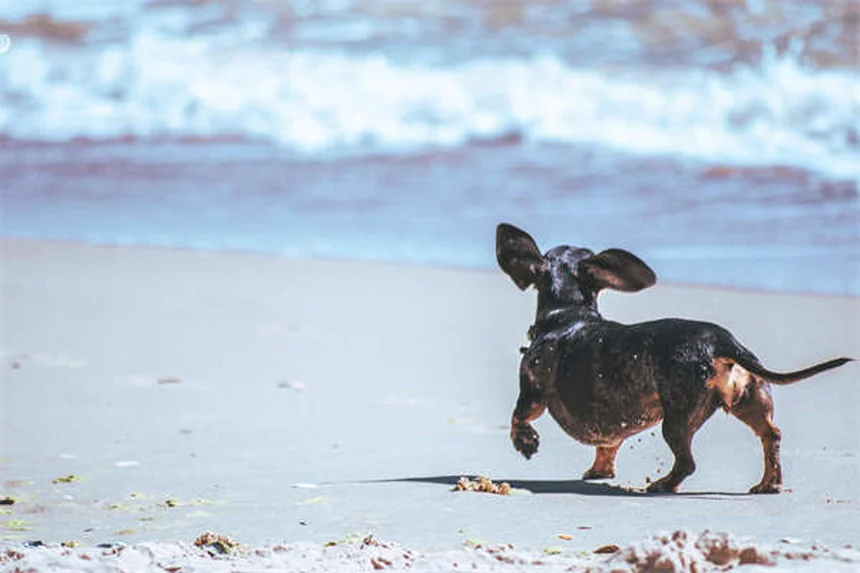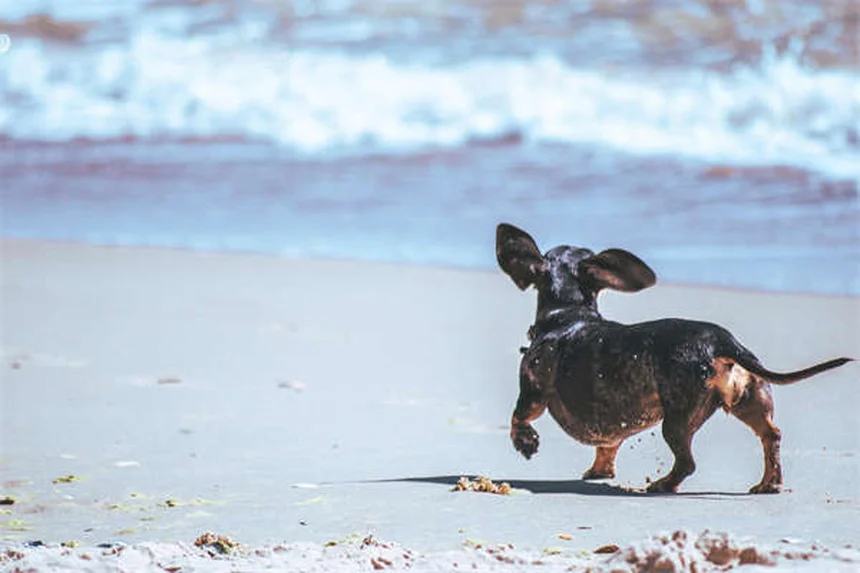Advertisement
What causes a retained fetus in chinchillas? The answer is: infections and poor nutrition are the main culprits behind this dangerous condition. When a chinchilla's fetus dies late in pregnancy or during birth, it can get stuck inside mom - especially if fetal fluids are lost. I've seen too many cases where well-meaning owners miss the early signs until it's almost too late. Here's what you need to know right now: this isn't something that fixes itself. Your chinchilla will show clear symptoms like depression, fever, and neglecting her live kits. The good news? With quick vet care (often including X-rays and possibly surgery), most chinchillas recover completely. We'll walk you through exactly what to watch for and when to sound the alarm.
E.g. :Why Do Cats Purr? 5 Surprising Reasons Behind This Mysterious Sound
- 1、Understanding Retained Fetus in Chinchillas
- 2、Why Does This Happen?
- 3、Getting the Right Diagnosis
- 4、Treatment Options That Work
- 5、Aftercare That Makes a Difference
- 6、Stopping This Before It Starts
- 7、Final Thoughts
- 8、Beyond the Basics: Digging Deeper into Chinchilla Health
- 9、Nutrition Secrets for Prevention
- 10、When Nature Needs a Hand
- 11、Understanding the Breeder's Role
- 12、Myth Busting Time
- 13、Building Your Support Network
- 14、FAQs
Understanding Retained Fetus in Chinchillas
What Exactly Is a Retained Fetus?
Imagine you're expecting a package, but it gets stuck in the mail. That's kinda what happens with a retained fetus in chinchillas. It's when a baby chinchilla (fetus) doesn't make it out during birth or dies late in pregnancy. Early on, mom's body usually reabsorbs it – nature's way of cleaning up. But if it happens near delivery time? That's when trouble starts.
Here's the deal: When fetal fluids disappear, the fetus can get "stuck." Sometimes you might even see a dead fetus delivered with healthy babies. Weird, right? But it happens more than you'd think in these fluffy little guys.
Spotting the Warning Signs
Your chinchilla won't tell you she's got problems, but her body will scream it loud and clear:
- Acting depressed (not just "I don't wanna get up" depressed, but seriously withdrawn)
- Ignoring her live babies (what kind of mom does that? A sick one, that's who)
- Turning up her nose at food (and chinchillas LOVE to eat)
- Dropping weight faster than my New Year's resolutions
- Running a fever (chinchilla forehead kisses aren't recommended, but you'll notice)
And here's the scary part – if you don't catch this early, it could be fatal. That's why knowing these symptoms is literally a lifesaver.
Why Does This Happen?
 Photos provided by pixabay
Photos provided by pixabay
The Usual Suspects
Let's play detective. What causes this messy situation? Two main culprits:
1. Infections: Like that time you ignored a cut and it got infected? Same idea – bacteria throw a party where they shouldn't.
2. Bad Nutrition: You wouldn't run a marathon on fast food, right? A pregnant chinchilla needs top-notch fuel. Skimp on quality, and you're asking for trouble.
Oh, and remember those fetal fluids we mentioned? When they bail early, it's like removing the lubricant from a machine – things get stuck.
How Common Is This?
Check out this quick comparison:
| Pregnancy Stage | Retention Risk |
|---|---|
| Early Pregnancy | Low (usually reabsorbed) |
| Mid Pregnancy | Moderate |
| Late Pregnancy | High |
See how the danger goes up as delivery approaches? That's why late-term losses are the real headache.
Getting the Right Diagnosis
First Steps
After birth, I always do what I call the "chinchilla math" – count placentas and babies. Numbers don't match? Red flag. But here's a question: Can you always tell just by looking?
Nope! Sometimes everything seems fine until mom starts acting weird. That's when you need the big guns – X-rays. They're like superhero vision showing exactly what's happening inside.
 Photos provided by pixabay
Photos provided by pixabay
The Usual Suspects
When you rush to the vet (and you should), here's what to expect:
The doc will check for:- Abnormal discharge (not the pretty kind)- Fever (chinchillas normally run cool)- Pain responses (they're tough, but this hurts)
And then comes the moment of truth – those X-rays we talked about. No way around it, this is the gold standard for diagnosis.
Treatment Options That Work
Medication Route
Ever heard of oxytocin? It's nature's "push" button. The vet might use this to get those uterine muscles working overtime. Think of it like calling in reinforcements to evacuate the stuck baby.
But wait – this only works if the fetus isn't too far gone. If it's mummified (yeah, gross but true), meds might not cut it.
When Surgery's Needed
Here's where things get serious. If meds fail, it's C-section time. I know, surgery sounds scary, but modern vet medicine is amazing. They'll:
- Put your chinchilla under safe anesthesia
- Make a careful incision
- Remove the retained fetus
- Clean everything up
Plus, they'll hit her with antibiotics to prevent infections – because nobody wants bacterial gatecrashers after surgery.
Aftercare That Makes a Difference
 Photos provided by pixabay
Photos provided by pixabay
The Usual Suspects
Picture this: you've just had major surgery. Would you want kids jumping on the bed? Exactly. Your chinchilla needs:
- A quiet, dim area (no party lights)- Soft bedding (think chinchilla memory foam)- Easy access to food and water (no acrobatics required)
Food Matters
Now's not the time for dieting! We're talking premium hay, fresh veggies, and maybe some special recovery supplements. Your vet will give you the menu – follow it like your chinchilla's life depends on it (because it kinda does).
And here's a pro tip: Watch that incision site like a hawk. Chinchillas are notorious for picking at stitches. Cone of shame? Maybe. Better than infected wounds.
Stopping This Before It Starts
The Golden Hour
After birth, you've got a narrow window. Here's my routine:1. Count babies (cute part)2. Count placentas (less cute)3. Check mom's behavior (super important)4. Feel her belly (gently!)
What if you're not sure? That's easy – call your vet. I'd rather make ten unnecessary calls than miss one real emergency.
Prevention Table
Let's break it down:
| Prevention Method | How It Helps |
|---|---|
| Quality Diet | Builds strong mom and babies |
| Clean Environment | Keeps infections away |
| Regular Vet Checks | Catches problems early |
| Post-Birth Exam | Ensures nothing's left behind |
See how each piece fits? It's like building a fortress against this condition.
Final Thoughts
Why This Matters
Chinchillas are tough but delicate. One retained fetus can spiral into serious health issues fast. But here's the good news – with sharp eyes and quick action, you can beat this.
Remember that time you thought something was off with your pet and it turned out to be nothing? That's okay! In chinchilla care, it's always better to overreact than underreact.
Your Action Plan
Bookmark these steps:1. Know the symptoms (we covered those)2. Have your vet's number handy (speed dial even)3. Prepare a recovery space (before it's needed)4. Stock quality food (no last-minute store runs)
Do this, and you're not just a chinchilla owner – you're a chinchilla hero.
Beyond the Basics: Digging Deeper into Chinchilla Health
The Emotional Toll on Mama Chinchilla
You ever notice how human moms get baby blues? Well, chinchilla moms experience something similar. When a fetus gets retained, it's not just physical - it messes with their heads too. I've seen normally social chinchillas become complete loners, hiding in corners and refusing interaction.
Here's what's wild: These fluffy creatures actually grieve. They'll often stop grooming themselves, their fur getting matted and dull. And get this - some even stop making those adorable chinchilla sounds we love! It's like their whole personality changes overnight.
The Ripple Effect on the Colony
Now here's something most folks don't consider - how this affects other chinchillas. In group settings, one sick mom can throw off the whole dynamic. The others might:
- Start avoiding her (chinchillas can be brutally honest with their social cues)
- Become more aggressive during feeding time
- Suddenly stop breeding (nature's way of saying "something's wrong here")
And here's a kicker - sometimes the other females will try to care for the abandoned babies. Talk about a community effort!
Nutrition Secrets for Prevention
Superfoods for Super Moms
You know how athletes carb-load before a big race? Pregnant chinchillas need their version of that. We're talking:
- High-quality timothy hay (not that dusty bargain stuff)- Fresh rose hips (nature's vitamin C bomb)- Small amounts of oats (the good kind, not instant packets)- Occasional dried herbs like peppermint (great for digestion)
And here's a pro tip - I always keep some critical care formula on hand. Even if everything goes perfectly, it's great for that extra nutritional boost.
The Water Factor
Ever notice how chinchillas are picky about their water? There's a reason! During pregnancy, water quality becomes ultra-important. I recommend:
- Changing water twice daily (no exceptions)
- Using glass bottles (plastic can leach chemicals)
- Adding a vitamin supplement if your vet approves
And get this - some chinchillas prefer slightly warm water during late pregnancy. Who knew they were so fancy?
When Nature Needs a Hand
The Art of Assisted Delivery
Sometimes you might need to play midwife. But before you panic, here's what experienced breeders do:
First, clean hands (obviously). Then, if a baby's stuck, we use mineral oil as lubricant. Gentle traction in rhythm with mom's contractions can work wonders. But here's the million dollar question: When do you stop trying and call the vet?
Simple rule - if it's not working after three gentle attempts, or if mom seems exhausted, it's vet time. No heroics, just smart decisions.
Post-Delivery First Aid Kit
Every chinchilla owner should have these on hand:
| Item | Purpose |
|---|---|
| Digital scale | Track mom's weight recovery |
| Pedialyte | Rehydration solution |
| Soft cloths | For cleaning babies if needed |
| Heat pad | Keep weak babies warm |
Notice I didn't include medications? That's because you should never play vet with drugs. Leave that to the professionals.
Understanding the Breeder's Role
Record Keeping Saves Lives
Here's where many folks slack off - documentation. I keep a "chinchilla baby book" for every pregnancy that includes:
- Breeding dates (duh)- Weight gain patterns (weekly is best)- Behavioral notes (like when she starts nesting)- Any unusual symptoms (no detail is too small)
Why bother? Because patterns emerge. Maybe certain foods cause issues, or perhaps there's a genetic link. This info is gold for preventing future problems.
The Ethics of Breeding
Let's get real for a second - should every chinchilla be bred? I've learned the hard way that some just aren't cut out for motherhood. Factors to consider:
- Previous pregnancy complications- Overall health and temperament- Age (too young or too old increases risks)- Genetic history if known
Sometimes the kindest choice is to spay and let them live their best single chinchilla life. Tough decision, but part of responsible ownership.
Myth Busting Time
Old Wives' Tales Debunked
You wouldn't believe the nonsense I've heard! Let's set the record straight:
Myth: "Chinchillas can handle multiple litters back-to-back."Truth: They need at least 6 months between pregnancies to recover fully.
Myth: "A little bleeding after birth is normal."Truth: Any bleeding warrants an immediate vet call.
Myth: "They'll eat the placenta for nutrition."Truth: While they might nibble it, this isn't necessary with proper diet.
Modern Vet Care Advances
Here's some exciting news - vet medicine has come a long way! Nowadays we have:
- Ultrasound technology (way better than guessing)- Specialized chinchilla anesthesia protocols- Advanced antibiotics that are safer for small animals- Better pain management options
And get this - some vets even do chinchilla C-sections routinely now with great success rates. The future is here, folks!
Building Your Support Network
Finding the Right Vet
Not all vets are created equal when it comes to chinchillas. Here's what to look for:
1. Actual experience with chinchilla births (ask for numbers)2. Emergency availability (babies don't wait for business hours)3. Willingness to consult with specialists if needed4. A clinic equipped with proper small animal tools
And here's a tip - I always do a "test run" with new vets before an actual emergency. Better to meet when it's not life or death!
Online Communities That Help
When you're up at 3 AM with a worrying situation, these forums have saved my sanity:
- Chinchilla Owners Group (Facebook)
- The Chinchilla Breeding subreddit
- Chins & Hedgies forum (despite the name, great info)
Just remember - take internet advice with a grain of salt. When in doubt, call your vet!
E.g. :Retained Fetus in Chinchillas | PetMD
FAQs
Q: How can I tell if my chinchilla has a retained fetus?
A: Watch for these red flags: your chinchilla acting depressed (not just sleepy), ignoring her babies, refusing food, or running a fever. I always tell owners - if your normally active chinchilla suddenly becomes a lump, that's your cue to worry. You might also notice weight loss or unusual discharge. The scary part? Sometimes the only symptom is sudden death. That's why we recommend immediate post-birth checks and keeping your vet on speed dial.
Q: What will the vet do for a retained fetus?
A: Your vet typically starts with oxytocin injections to stimulate contractions - think of it as nature's reset button. If that doesn't work (and with mummified fetuses it often doesn't), they'll move to a C-section. Here's what we do in our clinic: full anesthesia, careful removal of the fetus, then antibiotics to prevent infection. The whole process takes about an hour, and most chinchillas bounce back surprisingly fast. Just be ready for some extra TLC during recovery - soft bedding, quiet space, and premium food are musts.
Q: Can a chinchilla survive a retained fetus?
A: Absolutely - if caught early. I've treated dozens of chinchillas who made full recoveries after retained fetus removal. The key is timing - waiting even 24 hours can turn a manageable situation into a life-threatening one. Survival rates drop sharply if toxemia sets in. That's why we stress knowing the symptoms and acting fast. Pro tip: Keep your exotic vet's emergency number handy, because weekends and holidays don't stop medical emergencies.
Q: How can I prevent this from happening to my chinchilla?
A: Prevention starts with three simple steps: 1) Feed pregnancy-formulated diets (no skimping!), 2) Maintain spotless cage hygiene to prevent infections, and 3) Schedule pre-birth vet checkups. After delivery, do what we call the "placenta count" - match babies to afterbirth. Missing one? Call your vet immediately. I also recommend gentle belly palpation (if your chinchilla allows) to check for anything unusual. Think of it like an insurance policy for your pet's health.
Q: How soon after birth should I worry about a retained fetus?
A: The golden window is the first 12-24 hours post-birth. Here's my protocol: Within 6 hours, check for all placentas and monitor mom's behavior closely. By 12 hours, if she's not eating or seems "off," it's vet time. Don't fall into the "let's wait and see" trap - with retained fetuses, every hour counts. I've had clients save their chinchillas by bringing them in at 3AM, and others lose theirs by waiting until "normal business hours." When in doubt? Make the call.




